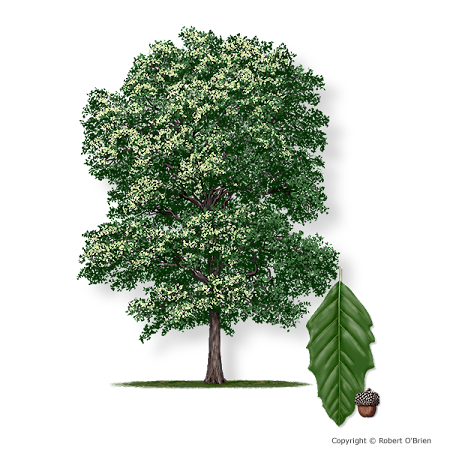Anacacho orchid tree is one of my personal favorite small to mid size trees. It’s great for a focal point ornamental or for getting a tree into tight spaces. The tree is native to western central Texas; Austin is slightly outside of the tree’s natural range, but it does thrive here. The tree’s canopy tends to be thin naturally; it has a fine, delicate texture which allows light through for understory plants. Anacacho orchid is a good butterfly tree. Continue reading Anacacho Orchid Tree – Bauhinia congesta
Category: Uncategorized
2011 Texas Tree Conference – Building Bridges with Arboriculture
 On October 5th – 7th the best arborists in the state will be meeting in Waco for the 32nd annual Texas Tree Conference. The event is for local arborists and foresters to learn from the leading researches and leaders in the industry and obtain needed CEU’s to maintain arborist certification requirements. However, anybody is welcome. You don’t have to be a professional arborist to come.
On October 5th – 7th the best arborists in the state will be meeting in Waco for the 32nd annual Texas Tree Conference. The event is for local arborists and foresters to learn from the leading researches and leaders in the industry and obtain needed CEU’s to maintain arborist certification requirements. However, anybody is welcome. You don’t have to be a professional arborist to come.
You can register online at the ISAT webstore.
Get the registration brochure here.
Here is the vendor registration form in you want to be a sponsor.
Rainwater Harvesting / Collection
As much as I want to believe that my exhaustive arborist knowledge and skills are the saving grace for all trees I encounter, the reality is rain does more good than anything I can dream up. Unless… if I could provide trees with rainwater on demand! Hello rainwater harvesting. Did you know that irrigation water from a well or the city’s supply is vastly different than rainwater? Continue reading Rainwater Harvesting / Collection
Now Hiring Arborist / Salesman
We are currently looking to hire an ISA certified arborist for a sales position. Come join our team of knowledgeable tree workers and help keep Austin Green! Continue reading Now Hiring Arborist / Salesman
Twitter Weekly Updates for 2010-11-01
- Bot canker on arborvitae. Been seeing a lot of bot this summer. http://yfrog.com/evz7qij http://yfrog.com/f1p85hj #
- Hard to see in pics, but this is fruiting body causing stress fractures. http://yfrog.com/5kwbloj http://yfrog.com/3v77cttj #
- Hard to see in pics, but this is fruiting body causing stress fractures. http://yfrog.com/159jnjj http://yfrog.com/507m6gj #
Twitter Weekly Updates for 2010-10-11
- Mystery live oak problem shedding leaves http://yfrog.com/nacnkmj http://yfrog.com/5lqjyj http://yfrog.com/m9t7obj http://yfrog.com/6rzmhj #
- At the annual ISAT Texas Tree Conference in College Station: Trees Mean Business. http://yfrog.com/5pptacj http://yfrog.com/j7mi4kj #
- City of Pflugerville citizen Pforester class. Micah and Keith are teaching pruning and soil/fertilizer. http://yfrog.com/5ypbwhj #
- We removed a dying cottonwood for the Austin Symphony and they had this awesome carving done on the remaining stump http://yfrog.com/ca6t8cj #
- Micah manning the booth at the Austin apparently association expo @ parmer event center http://yfrog.com/b9tmjij #
- Parks n Rec stakeholder meeting to discuss private profitable use of public land. Mostly about trainers http://yfrog.com/mh6d1cj #
- Typical fate of a 12 year old Bradford pear. http://yfrog.com/3tnp4dj http://yfrog.com/ncud7tj #
Our New Employee – the Mini Skid Steer
We got a new worker recently. A new machine to help us load and haul heavy logs. I’ve been a long time hater of equipment. It’s just more to take care of. But, one of my friends up in Ft. Worth, Jimmy Pritchard of Integrity Tree Care, has been telling me for a long time that it has revolutionized his business. So, I’ve decided to give it a try. The machine is pretty low cost compared to most equipment and it is small so we can take it into back yards and many other places that large equipment won’t go. We’ve only done one job with the mini so far, but it is definitely earning its keep. The logs in this video are from a palm tree. This wood is difficult to cut with chainsaws and the wood is very heavy. With the mini skid steer we didn’t have to cut into small pieces or pick them up at all!
As you can tell, we’re going to have to get used to driving it, but this machine is going to save us a lot of back breaking labor!
Treaty Oak in Austin
The Treaty Oak is a southern live oak (Quercus virginiana) located in Treaty Oak Park on Baylor St. between 5th and 6th downtown. This historic tree is said to be over 500 years old. In 1927, our green piece of history was inducted into the American Forestry hall of fame. They said it to be the “most perfect specimen” of a tree in north America. The Treaty Oak is the last tree standing from a group of trees known as the Council Oaks. The grove was 14 trees strong at one time.
Continue reading Treaty Oak in Austin
All About Monterrey Oaks
Monterrey oaks (also known as Mexican white oak) started getting popular as a planting choice about 10 years ago. There are a few scattered specimens around town that are older than this, but not many. So far, this tree is proving to be a hardy tree to the area and it is oak wilt resistant. I expect to see more and more of the Monterrey oak as the years go by. But, for now, the jury is still out on this tree in my opinion. We’ll need to see a number of these trees live into maturity before I give them a full-blown thumbs up. I’ve run across a few mature specimens and they all seem to be very free of problems. I’ve began recommending this tree regularly.

Critters Getting on Your House Through the Trees?
Racoons, squirrels, rats, you name it. If it can climb, it wants in your house. I frequently get called out to bid a tree trimming jobs where the only goal is to cut the tree back far enough so that wild life can’t use it to get on the roof. Take my recommendation and don’t butcher up your trees in an overzealous attempt to keep everything away from your roof. For starters, call a wildlife / rodent control service and consult with them. Arborists or tree trimmers are not the best people to talk to about controlling wildlife. I like to refer people to Austin Wildlife Pro.
For starters, call a wildlife / rodent control service and consult with them. Arborists or tree trimmers are not the best people to talk to about controlling wildlife. I like to refer people to Austin Wildlife Pro.
To keep Raccoons out of your attic you only need a small amount of clearance. Raccoons are somewhat fat and clumsy; you won’t catch them doing many acrobatic tricks. I’ve watched a squirrel with my own two eyes scale a brick wall, so no amount of tree pruning is really going to solve that problem.